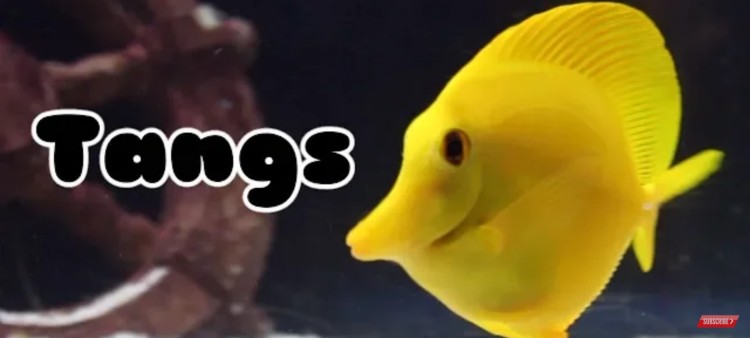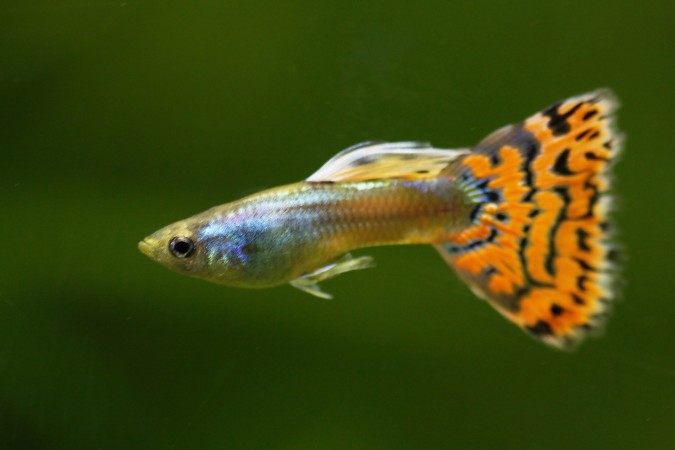Tangs: Species, compatibility, and more
- Mar 05, 2022
- Anshika Mishra
- 1887 0 0

In this article, we want to discuss compatibility with certain types of saltwater fish, specifically Tangs.
Tangs
Desjardins

Tangs come in a lot of different species. One of these varieties is Desjardins, aka Sail Fin Tang. There are two Sail Fin varieties. However, the one from the indo-pacific with the extra-orange color is the most popular variety in the aquarium hobby.
Kole Tang

What makes a Kole Tang so specific is that it has a v-shaped mouth and goes along the rocks picking algae and food all day long.
This is more of a solitary Tang in terms of how it moves about the reef, and it doesn't pose any territorial threat in most situations.
Sohal Tang

Sohal Tang is a cancerous species of Tang from the Red Sea. This is the fish that gets very domineering very fast. It can go in a predatory tank as it has a very large body and will become one of the tank rulers.
It is more interesting and not very afraid of the owners at all.
Blonde Naso Tang

The Naso Tang is a large-bodies, open water indo-pacific fish. This is a different variety of tanks from a completely different area.
Fishes like the Powders Blue Tang and Gold Rim Tang are an indo-pacific species of fish that is more of a schooling type of Tang.
However, if you have a 180-gallon tank, you can easily home four to five different species of Tangs where you have a lot of the same style or type of fish without actually having to put them in an incompatible situation.
Though many might argue, there are some Tangs that you will have no problem keeping alive in an aquarium. While some are very difficult and should be left for more experienced aquarists, price doesn't always determine that.
Purple Tang

It is one of the prettiest Tangs in the hobby and is a type of Tang that people aspire to. In most cases, it goes perfectly well with the Yellow-eyed Pole Tang and the Yellow Tang. So, you have a small aquarium with a lot of hiding rooms.
These fish come from the Red Sea in Egypt, and that is a long hike through the desert to get them here. Therefore, Purple Tangs will cost you about $150 upwards, depending on the season and when buying them.
This is probably the hardiest fish in the Tang fish community.
Powder Blue Tang

In contrast to the Purple Tang, Powder Blue Tang might not cost quite as much but is a very ick-prone fish. Therefore, you have to be very careful about adding that particular fish. Certain fish Tangs are easier to keep than others. As common as the yellow Tang is, it is not hardier than the Purple Tang.
Depending upon how you add fish, there are some great fish like the Desjardins Tang and Purple Tang. The harder Tangs to keep are things like your Powder Brown, Achilles, Powder Blue, and more. These fishes can get spooked easily and catch diseases very easily. Therefore, before adding these fish to your tank, you must do proper research and get your tank ready.
Grouping of Tangs
The body styles are where you get the family names from. The Scopus Tang, Yellow Tang, Sail Fin Tang, and the Purple Tang make up the ZebraSoma Family. Whenever you are setting up a Tang, the amount of them you can put together is very limiting, depending on how that tank is set up in design. Typically we don't want to mix Zebrasoma with other Zebrasoma unless the tank is very large.
So, for instance, if you have a Yellow Tang that was already established in a 55-gallon tank putting a Sail Fin in there with them might not be such a good idea.
You can do it, but there are going fight at least for 24 to 48 hours. The larger the tank is, the more heavily decorated with rock and escape places there are how you will be able to add things. However, putting a Zebrasoma with a Ctenochaetus because they are different species of Tangs is perfectly fine, and typically aggression won't be so bad.
In addition, Acanthurus or Neso, you can have four Tangs together. You need to make sure that they all represent a different type of group from a classification standpoint. The larger aqaurium will give you more adaptability.
Sometimes, you can add Yellow Tang and a Purple Tang simultaneously, especially if their sizes are different and don't have established territories. It is much better.
Any fish that goes into a new aquarium or a new environment will establish its territory. Therefore, you don't want to lag too much time difference if you plant particular species together.
For the smaller tanks (55-gallons and less), try to keep just one fish of a species in the tank.







About author